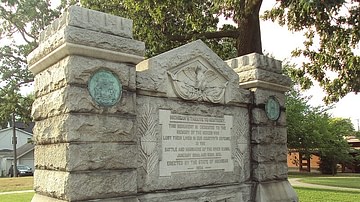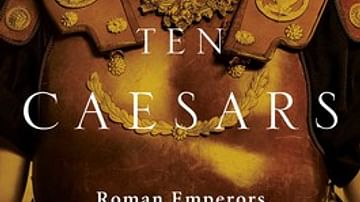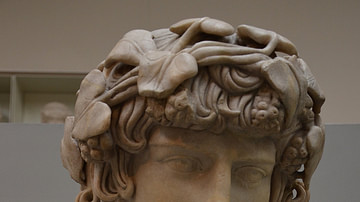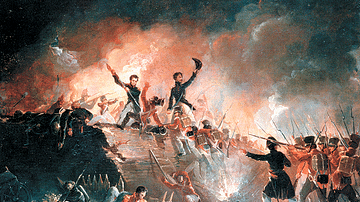Search
Did you mean: Trajan's Column?
Search Results

Video
Capital of a column from the audience hall of the palace of Darius I, Susa, c. 510 B.C.E.
Capital of a column from the audience hall of the palace of Darius I, Susa, c. 510 B.C.E., Achaemenid, Tell of the Apadana, Susa, Iran (Louvre)
Speakers: Dr. Steven Zucker & Dr. Beth Harris

Article
Battle of the River Raisin
The Battle of the River Raisin (18-23 January 1813), also known as the Battle of Frenchtown or the River Raisin Massacre, was a significant engagement in the War of 1812. It saw the defeat of a US army at Frenchtown (modern-day Monroe, Michigan...

Interview
Interview: Barry Strauss on Ten Caesars
Dr. Barry Strauss' Ten Caesars: Roman Emperors from Augustus to Constantine tells the epic story of the Roman Empire from its rise to its eastern reinvention, from Augustus, who founded the empire, to Constantine, who made it Christian and...

Definition
Caryatid
Caryatid is the name given to an architectural column which takes the form of a standing female figure. The first examples come from ancient Greek architecture and indeed, the most celebrated examples are found in the south porch of the Erechtheion...

Definition
Antinous
Antinous (l. c. 110-130 CE) was a youth of Bithynia who became the beloved of the Roman emperor Hadrian (l. 76-138 CE, r. 117-138 CE) from around the age of 13 until his death at nearly 20. His year of birth is unknown as are any details...

Definition
Lucius Verus
Lucius Verus was Roman emperor from 161 to 169 CE. Lucius Verus was Marcus Aurelius' adopted brother and co-emperor, a man whose time on the throne is overshadowed by the reign of the last of the Five Good Emperors. In the final years of...

Article
The Arch of Constantine, Rome
The Arch of Constantine I, erected in c. 315 CE, stands in Rome and commemorates Roman Emperor Constantine's victory over the Roman tyrant Maxentius on 28th October 312 CE at the battle of Milvian Bridge in Rome. It is the largest surviving...

Definition
Battle of Raismes
The Battle of Raismes was a major engagement in the Flanders Campaign of 1792-1795, during the War of the First Coalition (1792-1797). It saw a French Republican army under the command of General Dampierre attack a larger Coalition force...

Article
George Washington in the French and Indian War
The life and career of George Washington (1732-1799) were largely impacted by the French and Indian War (1754-1763). An officer of the Virginia Regiment, Washington's actions at the Battle of Fort Necessity and the Braddock Expedition helped...

Article
Siege of Fort Erie
The Siege of Fort Erie (4 August to 21 September 1814) was one of the last major military operations of the War of 1812. Following the bloody Battle of Lundy's Lane, a US army retreated into Fort Erie, where it was soon besieged by a British...